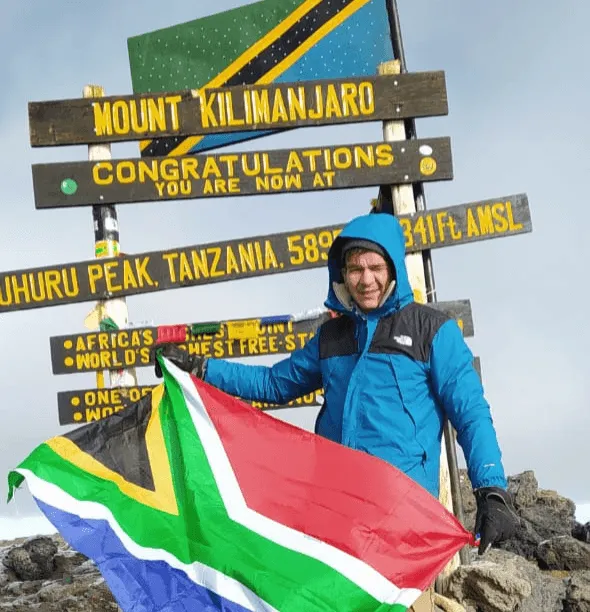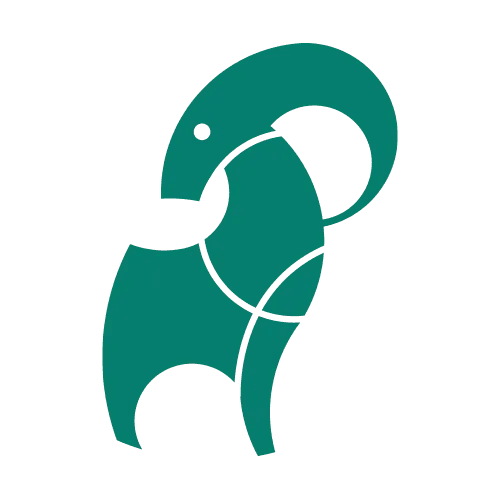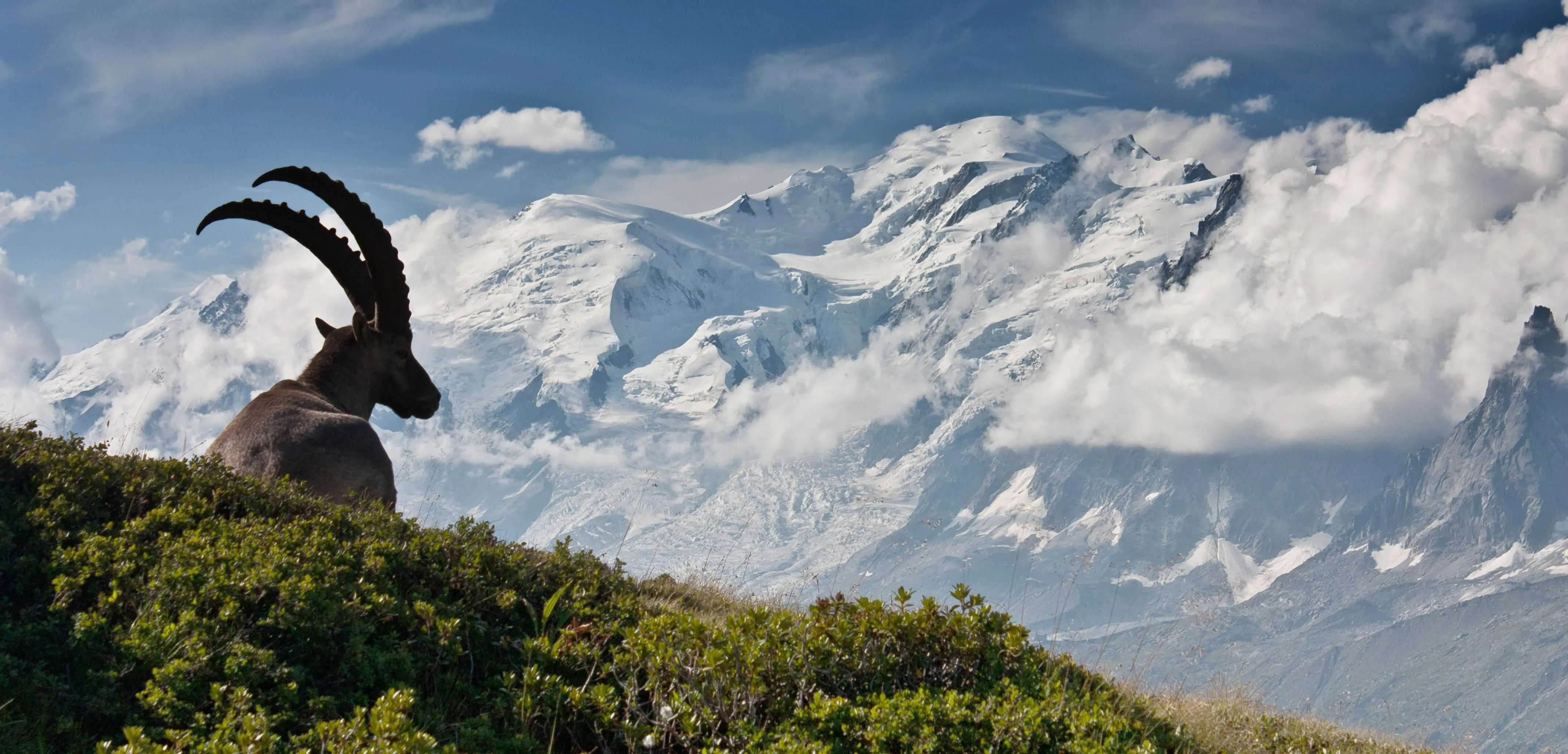Wishlist
0
 English
English EUR €
EUR €
GBP £
USD $
CAD C$
SEK kr
NOK kr
DKK kr
AUD A$
CHF CHF
NZD NZ$
HKD HK$
SGD S$
0
 English
English 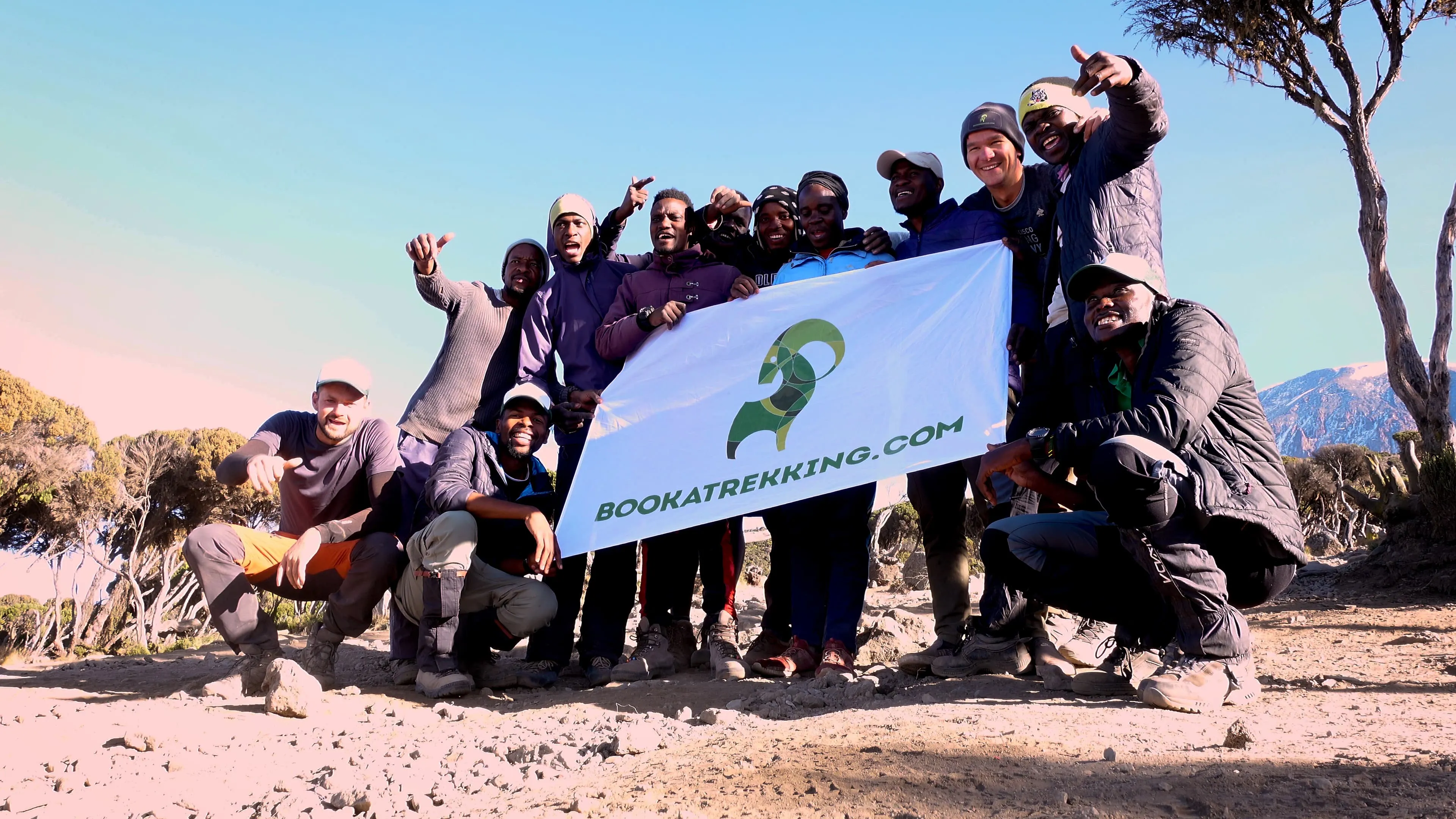

You will be picked up by your guide and assistant guide. There’s a fair chance that the majority of the team will be joining you in the van. The others will be met at the gate. All the stuff that is carried by the porters needs to be weighed at the gate. To kill time and to get you properly fueled, the cook will already cook up a small meal for you. You won’t be alone here. There are likely a few dozen climbers waiting to start. The guide will ask you to fill out some paperwork and then you’re off.
Soon you will be hiking through the lush rainforest with its large ancient trees, primeval ferns, and endemic flowers, like the Impatiens Kilimanjaro. You might also spot black and white thumbless colobus monkeys peeking through the leaves. Reaching the campsite, you will have time to relax, stretch your legs, and enjoy a hearty meal before snuggling into your tent for the night.
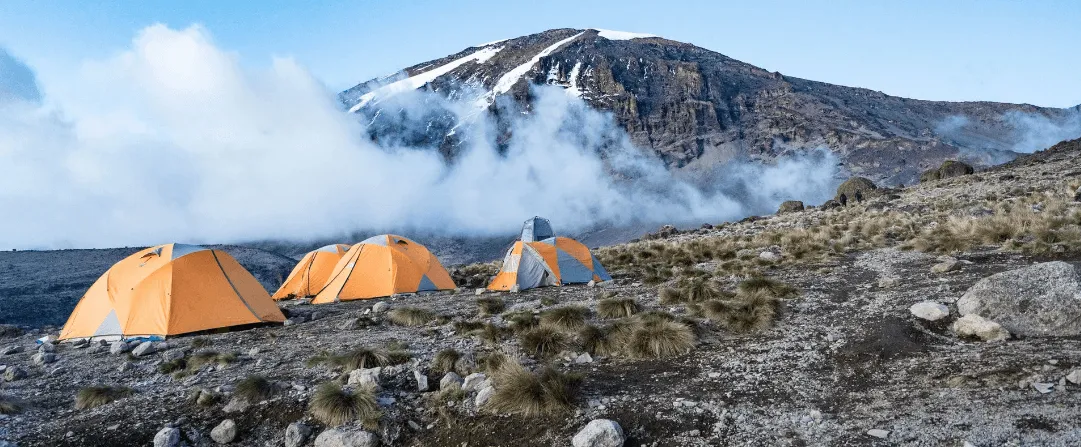
The cook’s assistant will wake you up and bring you your tea or coffee. He’ll ask you for your bottles, so he can fill them up for you. 15 minutes later there will be a complete breakfast ready for you. Climbing Kilimanjaro is perhaps hard, but the good care and food definitely make it a whole lot easier. Think eggs, pancakes, toast - whatever you want. Vegetarian? No problem. Gluten-Free? Coming right up.
Today you will ascend to Shira Camp. You will notice the dramatic change in the landscape as you get out of the rainforest and find dry moor and heathland. It may not look like it, but Shira Camp is at a whopping 3,845 metres or 12,616 feet. You can take the whole day for your trek, enjoying the views on the way, chatting to fellow climbers, and listening to the interesting stories from your guide(s). The easier you go, the better you will acclimatize.
Every night you can expect a scrumptious meal prepared with the freshest local ingredients. At Bookatrekking.com we’ve even enjoyed freshly caught fish from Lake Victoria. And are you could? Hang out with the porters in their tent when the cook is preparing food for everyone. Good conversations and warmth are guaranteed.
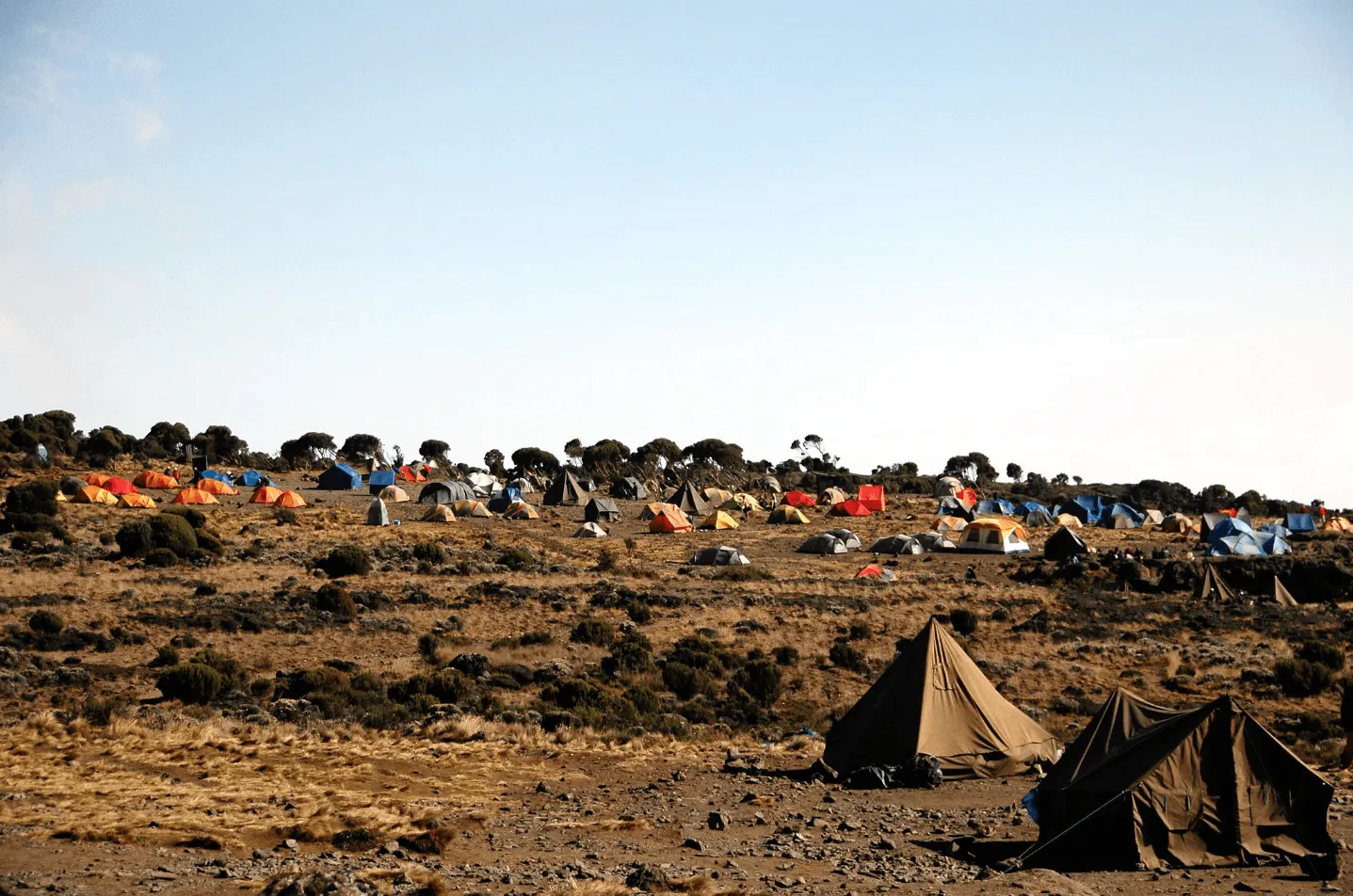
Today is a beautiful day. After breakfast and the usual “wishy-washy”, which is the tub of warm water and soap you get given every morning, you head off in the direction of Lava Tower. You might already start feeling the effects of thinner air. It can for example fool with your maths skills. Try to do some subtractions and multiplications. It’s good fun.
Ascending will go a bit more gradual from here onwards. The views will blow your mind as the landscape is slowly but surely changing. Other routes, like the Lemosho Route and the Northern Circuit, will join you on this stretch. This day is not only beautiful, it’s also a crucial day for acclimatization. Lava Tower at 4,640 metres or 15000 feet is the highest point. Here you will have lunch before you will descend to Barranco Camp at 3,960 metres (12,992 ft.), pretty much the same altitude as Shira Camp. Having spent some time in Lava Tower will have helped your body to adapt to higher altitude later this week. In Barranco Camp you will get ready for the Barranco Wall. Get some good rest.
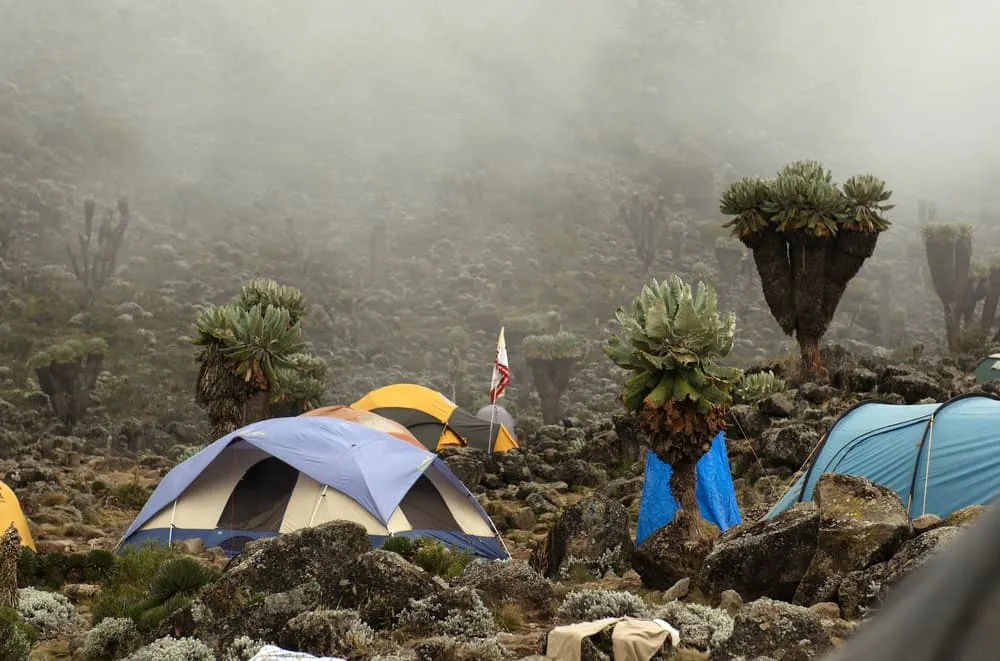
Your trekking company is able to pick you up from the airport and bring your to your hotel. A transfer back to the airport is also included in the package.
The transport from your accommodation to the start point is taken care of. This also applies to the way back.
On Mount Kilimanjaro you're staying in our strong and well maintained four season mountain tents. Every time you arrive at your camp the tent has already been set up.
Double layered mats provided by your trekking company will put you to sleep in no time.
Breakfast, lunch and dinner are prepared during the trek. Your trekking company is bringing their own cook. Don't be surprised when you see an exclusive three course dinner on your plate.
During the trek you won't have a shortage on drinking water.
Don't expect an extensive shower, but there will be the possibility to use hot water for a decent wash.
The guides carry an altitude sickness kit to monitor your pulse rate, oxygen saturation and heart rate twice a day (very useful for monitoring the symptoms of altitude sickness (AMS) at altitude). Also emergency portable oxygen is carried along. On top of that the guides are qualified Wilderness First Responders.
The fees for the Kilimanjaro Rescue Team are covered. This is managed by KINAPA, Kilimanjaro National Parks. Interesting fact: Kinapa means “We carry each other” in Swahili.
The park entry fees, the crater fee, camping fee and value added tax are included in the price.
The total amount covers not only your own basics, but also those of your guide and porter. No unpleasant surprises.
Per person you generally have a team of 1 guide, 1 cook and 8 porters who will support you in your climb. If you are part of a group of four, you will be able to enjoy 2 guides, 1 cook and 12 porters. Although there will always be enough hands on deck, the exact amount of support staff varies per route.
Visas are required for all visitors, and cost about $50. For most nationalities it is possible to get a visa upon arrival when you arrive at the airport in Tanzania. Check with your local Tanzanian embassy or consulate to see what the requirements are.
The total amount is also exclusive of flights to and from Tanzania. To get an idea of which airlines are visiting Kilimanjaro International Airport (KIA), it is best to have a look at their website.
All personal expenses such as drinks at the bar, washing and other similar expenses are for your own account.
Your international travel insurance is your own responsibility. It is important that your travel insurance also covers adventures at a high altitude. Discuss your itinerary with the insurance company before you travel to Tanzania.
Tips for guides and porters are excluded. You decide what you want to tip, but be generous and read about tipping when you are planning to go trekking in Tanzania.
Portable flush toilet with a toilet tent is available for USD 70 for the entire trek.
Whether you stay in Moshi, Arusha or anywhere else, before and after the trek you have to take care of your own accommodation and meals.
